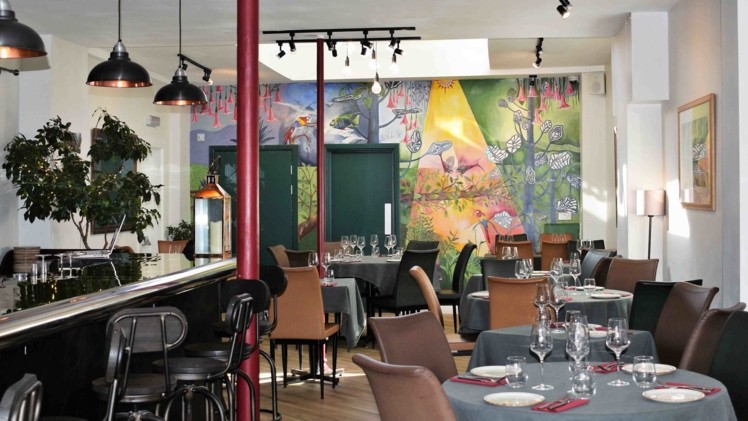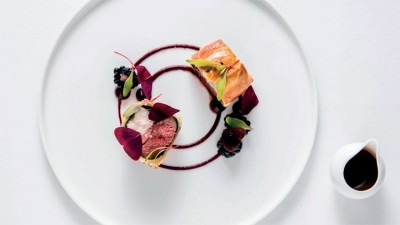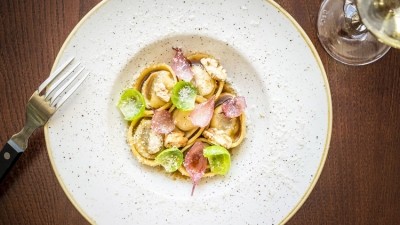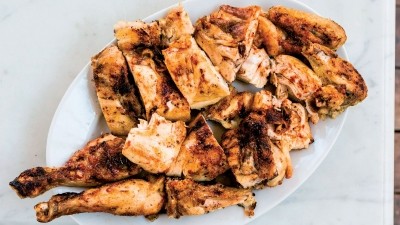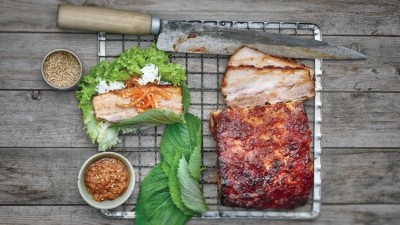Chef Masterclass: Ajiaco by Paladar's José Rubio-Guevara
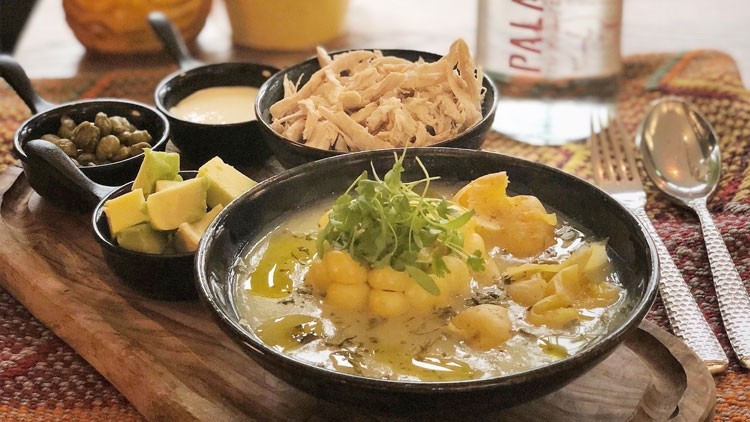
Chef José Rubio-Guevara is a proud Colombian and an evangelist for his country’s cuisine, spreading the word from his south London restaurant, Paladar, where his menu blends modern gastronomic techniques with the best Colombian produce he can find in London. He is not about to run out of ideas – Colombia is nearly five times the size of the UK.
“It’s very diverse – there’s the Caribbean coast, the Pacific coast, the mountainous interior, and the ranchlands to the east, towards the border with Venezuela – and that diversity is strongly reflected in the cuisine,” he says. “There are influences from African immigrants, the Spanish colonisers and Arab traders, as well as from our indigenous people. We even have a version of tabbouleh, introduced by Syrian and Lebanese immigrants to the Caribbean, although Colombia is not generally a paradise for vegetarians: our diet, especially inland, includes a lot of meat.”
Bandeja Paisa – bandeja means ‘platter’, and Paisa is a region in the mountainous northwest of the country – is a case in point. A huge mound of grilled steak, chicharrón (puffed-up pork crackling), chorizo, morcilla (black pudding), beans cooked with pork, rice and fried egg, it has recently been touted as Colombia’s national dish, even though no records of it exist in its current form and presentation before 1950.
There are alternatives to the meat feast, however. “On the coast, there is a good variety of seafood, often prepared in coconut-based sauces, and an overwhelming selection of fruits, many of them unfamiliar in the West: lulo, zapote, guama and mamoncillo, to name just a few. And there is the chontaduro, the fruit of a tree called a peach palm in English. It has firm, slightly fibrous orange flesh, tart and kind of sweet, and it’s very popular as a street food, served with local honey and a sprinkling of salt.” In the restaurant, Rubio-Guevara serves a purée of chontaduro and coconut milk with pan-fried tilapia fillets, alongside shredded green mango.
Each region has its own specialities, but, says Rubio-Guevara, there is a particular “like mom used to make it” dish with which all Colombians identify, although it’s especially popular in and around Bogotá, the capital city: a hearty chicken, corn and potato soup called ajiaco (pronounced a-hee-ack-oh).
Potatoes and corn are both indigenous to the Americas, and they are the soul of the dish, more so than the chicken which arrived with the Spanish in the 16th century. Rubio- Guevara uses three varieties of potato in his ajiaco, including papas criollas (native potatoes, literally).
“These are delicious baby potatoes, sweet and earthy, that we cook in many different ways. Fried papas are a really popular snack food: you buy them in paper bags from street vendors, but they can also be roasted. In the UK, you can buy them frozen.” (try www. solandinomarket.co.uk).
The corn is choclo maize, an ancient variety of (usually) white corn with giant kernels: it is starchier and not as sweet as the corn more commonly found in the UK, but you can use sweetcorn instead.
The other thoroughly Andean flavour is the herb guascas. “It’s very popular in Colombia, even though it is considered a weed in most other parts of the world. It was brought from Colombia to Kew Gardens in 1796 and escaped to the wild here.” A member of the daisy family, its Latin name – Galinsoga parviflora – comes from Ignacio Mariano Martinez de Galinsoga, an 18th-century Spanish botanist. His surname, corrupted to ‘gallant soldiers’, is one of its English names, although it is also known, less charmingly, as ‘potato weed’. It can be bought dried in packets, and gives a unique grassy flavour to ajiaco.
The recipe itself is simple. The chicken and corn are simmered together with potatoes, garlic, onions, yellow pepper and coriander, then removed. The soup is puréed, then used to cook the papas criollas. Finally, the chicken is shredded, the corn sliced, and everything is reassembled at the table, with additional bowls of ingredients allowing diners to customise their ajiaco to the way they like it.
Typical accompaniments include capers (introduced to Colombia from the Mediterranean by the Spanish), chopped avocado, cream and coriander. With its combination of the indigenous (corn, potatoes, avocado) and the introduced (chicken, capers, coriander), ajiaco is termed a mestizo (mixed, in Spanish) dish: as much as is possible for a country with such a varied cuisine, ajiaco is Colombia in a bowl.
Ajiaco (serves 4)
Ingredients
First stage
2 chicken breasts, skinned and boneless
2 ears of choclo maize (or yellow corn)
2l water
4 cloves of garlic, sliced
Half a white onion, diced
One yellow bell pepper, diced
500g medium-sized potatoes (red and/or white), peeled and cut into pieces
2 spring onions, chopped
6 sprigs of coriander, chopped
Second stage
300g small yellow potatoes (papas criollas) cut in half
8g dried guascas (see text), powdered
Salt and pepper
To serve
100ml double cream
Capers, drained, to taste
1 avocado, peeled, pitted and cut in small squares
Chopped coriander
Method
1. Put all the first stage ingredients into a medium size pot and bring to the boil. Cover with a lid and simmer for about 45 minutes on a gentle heat. Take out the corn and chicken, put them on a plate and cover. Blend the remaining ingredients in the pot with a stick blender until you have a creamy consistency.
2. Add the second stage ingredients to the pot and cook on a medium heat for around 12 minutes, or until the papas criollas are tender but not falling apart. In the meantime, shred the chicken breasts with your hands into pieces and slice each ear of corn into six.
3. To serve, divide the soup, corn and chicken between four bowls. Put all the other ingredients into small bowls on the side, to be added to taste by each diner.
